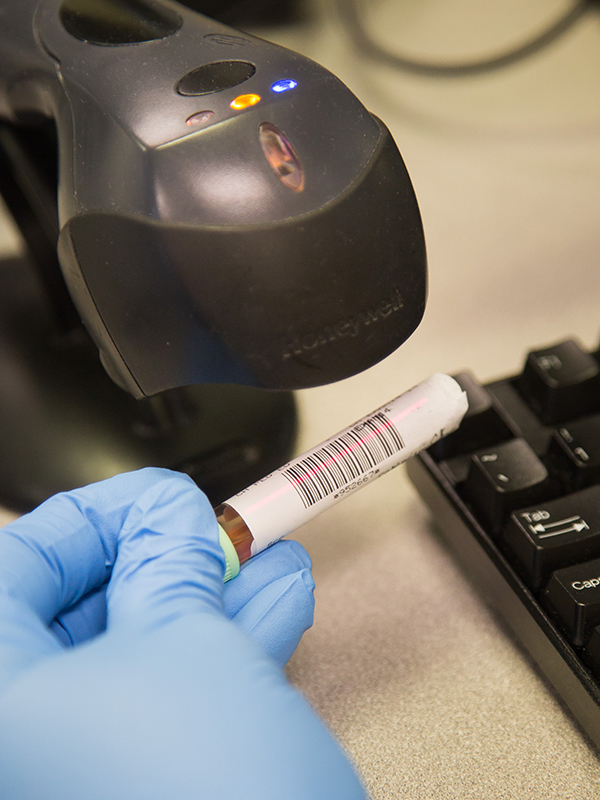'100-day Workout' puts employee input into action

When Medical Center employees said they wanted improvements in workplace communication, respect and recognition for a job well done, someone heard them and took action.
Last fall's employee engagement survey administered system-wide revealed both challenges and opportunities in the key areas of communication, respectfulness, professional development, awards and recognition, patient and employee safety, and patient and employee experience.

Teams of employees recruited from across the health system began tackling them Nov. 26 and summarized their work April 4. Their vehicle was the 100-Day Workout, a nationally recognized quality improvement methodology that brings together multidisciplinary groups of employees to tackle performance, quality, safety or other issues. The results are being rolled out now, said Daniel Enger, director of operational improvement.
“Each team met with staff and received great feedback on action plans that have been implemented and sustained for moving forward,” Enger said. The workout is ongoing, he said.
Each team's focus and a sampling of their actions include:
- The Guardians Team focused on improving patient and employee safety. Its work included improving the Medical Center's active shooter training in addition to upping the education on proper labeling of lab specimens. The team also worked on standardizing infection control practices by simplifying signs and existing policies.

The team employed “Tube Dude,” a cartoon character brainstormed by Batson lab staff, to drive home in a fun way the message of placing paper labels on tubes so that their bar code can be scanned, ensuring that the right patient is connected to the right sample. That means caregivers at bedside must affix the label to the tube vertically from top to bottom, not horizontally, not twisted or wrinkled, and not pushed up to cover all or part of the tube's rubber stopper, said Stephanie Morgan, director of the children's laboratory.
It also means putting a label on a specimen tube in the first place. “Seventy percent of decisions on diagnoses and treatment, hospital admissions and discharge are made with lab values,” Morgan said. “Our mission is to have a positive patient ID through the whole process, from collection to results.”
- The Pipeline Team sought to make effective communication a cornerstone of the health system's culture and to find out what forms of communication work best for different employees. Among the team's achievements were designing a customized newsletter template for departments to use to most effectively communicate their unique staffing needs, and creating panel discussions so that hospital leadership can have ongoing conversations with others across the organization.
- The R=C^2 Team sought to understand employees' different definitions of respect and to make changes to drive respectfulness in the workplace. The team commissioned the production of a video to show the importance of respect, and it's being used during employee orientation and in other venues.
The team also created a “Walk in Your Shoes” program that allows employees to see what it's like to work in other areas or occupations and how that can facilitate respect between departments. Also created was a “Coffee Talk!” program that brings together employees and senior health system leaders in small groups each quarter to discuss current events, points of pride and barriers to staff.
- The PIT Crew Team tackled professional development, creating a central link on the Intranet Yellow Pages that increases awareness of the training opportunities at the Medical Center and provides tools for continuing education and training. The team also partnered with areas hospital-wide to host events on benefits and educational opportunities for employees.
- The IT Factor Team explored ways to improve employee recognition. Members created a UMMC careers Facebook spotlight on employees and teams in the health system, and they redesigned the recognition and awards web page, including its Manager's Toolbox. They added certificate and thank-you card templates for managers to use in showing employees appreciation for a job well done.
- The Transformers Team sought to heighten the patient and employee experience by improving the experience of employees receiving care at the Medical Center and increasing patient satisfaction overall. Members collected “did you know” facts about UMMC and posted them campus-wide, and they promoted the use of the 4CARE hotline dedicated to employees that allows them quick access to services such as changing or cancelling appointments or getting prescriptions refilled.

“The 100 Day Workout process helps us to engage our staff and our leaders in not just problem solving, but also in brainstorming new and creative ways of doing things,” said Liz Youngblood, CEO of the three adult hospitals and the metro area adult outpatient clinics. “Our employees are our greatest asset. Ensuring that we have an engaged and enthusiastic workforce is essential to being able to accomplish our mission.
“We have an amazing team that understands not just the 'how,' but the 'why' of what we do,” she said. “I think that really comes across in the outcomes of this latest 100 Day Workout.”
Coming Next:
A story on the hows and whys of respect and disrespect at the Medical Center.
Earlier this year UMMC formed six focus groups to explore issues centering on respect in the workplace, an area cited in the Employee Engagement Survey as needing improvement. Focus group members - managers and non-managers from across the organization - gave their own definitions of respect and disrespect, and they detailed barriers to respectful behavior. The groups came up with suggestions to improve respect at the Medical Center, and not surprisingly, they included transparency in communication and regular interaction with and recognition by superiors.


